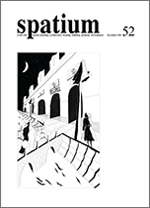An alternative model of social space: Research on the potential for cohousing in Serbia
DOI:
https://doi.org/10.2298/SPAT240513012MKeywords:
housing, community, interaction, flexibility, open practiceAbstract
This paper explores the social background of the contemporary community housing model (cohousing) whose representation in discursive theory is considered in relation to the crisis of the structural approach to housing issues. On the other hand, this model is investigated as a possible response of collaborative interdisciplinary practices to the volatile trends dictated by the market, aiming to achieve a socially sustainable urban form. In the first part of the paper, the concept of communal habitation is critically examined from the standpoint of the relationship between the private and public, through a comparative analysis of cohousing and residential models sharing similar spatial typology but having differing social profiles. This includes an overview of the broader circumstances related to spatial segregation issues and the aim to eliminate undesirable encounters. The second part of the paper relates to the specific professional and social context in Serbia, stemming from the gap between the mass implementation of socially-owned residential settlements and the interruption of planned urbanization amidst political and transitional crises. The analysis aims to identify problems affecting the largest segment of the population, considering the loss of neighborly connections, spatial stratification, growing social differences, and the deterioration of the housing fund due to construction speculation and the exclusivity of new residential complexes. The study results provide a foundation for the ongoing development of the idea of collaboration for the defense of shared space, forming a basis for investment and superstructure, gradually elevating quality towards socially sustainable urban development.


